Declawing cats remains a controversial topic that stirs up emotions among pet owners and animal advocates alike.
In many states, declawing is legal.
However, some places have made significant strides toward banning this inhumane practice due to its harmful effects on feline health and behavior.
As you explore the legal landscape of declawing, you’ll uncover the ethical considerations that weigh heavily on the decision to declaw, as well as the alternatives that can help maintain harmony in your home.
Different states and cities have varied regulations regarding declawing, with some doing everything they can to outlaw it altogether.
It’s essential to stay informed about the laws in your area and understand the potential health implications for your cat.
By becoming aware of the choices available to you and the ethical ramifications of declawing, you can make a more informed decision for your furry companion.
As we dive deeper into the subject, you will encounter insights from veterinary professionals, the importance of public education, and how societal norms are shifting towards more humane pet care practices.
Understanding these factors can guide you toward responsible pet ownership that prioritizes the well-being of your cat.
Key Takeaways
- Declawing is still legal in many states but is banned in some locations due to ethical concerns.
- There are healthier alternatives for claw management that can benefit both your cat and your home.
- Understanding the legal implications of declawing is crucial for responsible pet ownership.
The Ethics of Declawing
Declawing cats raises significant ethical concerns, especially regarding the animal’s well-being and health.
This section explores the impact of declawing on cats, the views of animal rights groups, and the stances taken by veterinary organizations.
Understanding Declawing and Its Impact on Cats
Declawing is more than just removing a cat’s claws.
It involves amputating the last bone of each toe, leading to potential pain and behavioral issues.
Many cats experience chronic pain, resulting in changes to their movement and overall personality.
The consequences of this surgery can be severe.
Cats may develop health problems such as arthritis or lameness.
Furthermore, the alteration in their ability to scratch can lead to increased stress, which may manifest in aggressive behaviors.
It’s important to consider how this procedure affects a cat’s quality of life.
Cats rely on their claws for balance and defense.
Removing them can compromise these basic instincts.
The Stance of Animal Rights Activists
Animal rights organizations, including the Humane Society and PETA, take a strong stance against declawing.
They argue that declawing is inhumane and causes unnecessary suffering.
Advocates emphasize that declawing ignores a cat’s natural needs and instincts.
These organizations work toward raising public awareness about the cruelty associated with the procedure.
They promote education on alternative solutions, such as training and environmental enrichment.
Many activists call for complete bans on declawing, working alongside legislatures.
Their efforts have led to changes in laws, reflecting a growing recognition of the issue’s ethical implications.
Veterinary Organizations’ Views
Veterinary groups, such as the American Veterinary Medical Association (AVMA) and the American Association of Feline Practitioners (AAFP), also advise against declawing.
The AVMA describes it as an elective procedure that poses significant risks to a cat’s physical and emotional health.
These organizations encourage non-surgical alternatives, such as regular nail trimming, scratching posts, and behavioral training.
They advocate for responsible pet ownership, emphasizing the need for education and understanding cats’ natural behaviors.
The position of veterinary organizations reflects a shift in the understanding of feline care.
Their stance aligns with a growing consensus that promotes the welfare of animals over convenience for owners.
Legal Aspects of Declawing
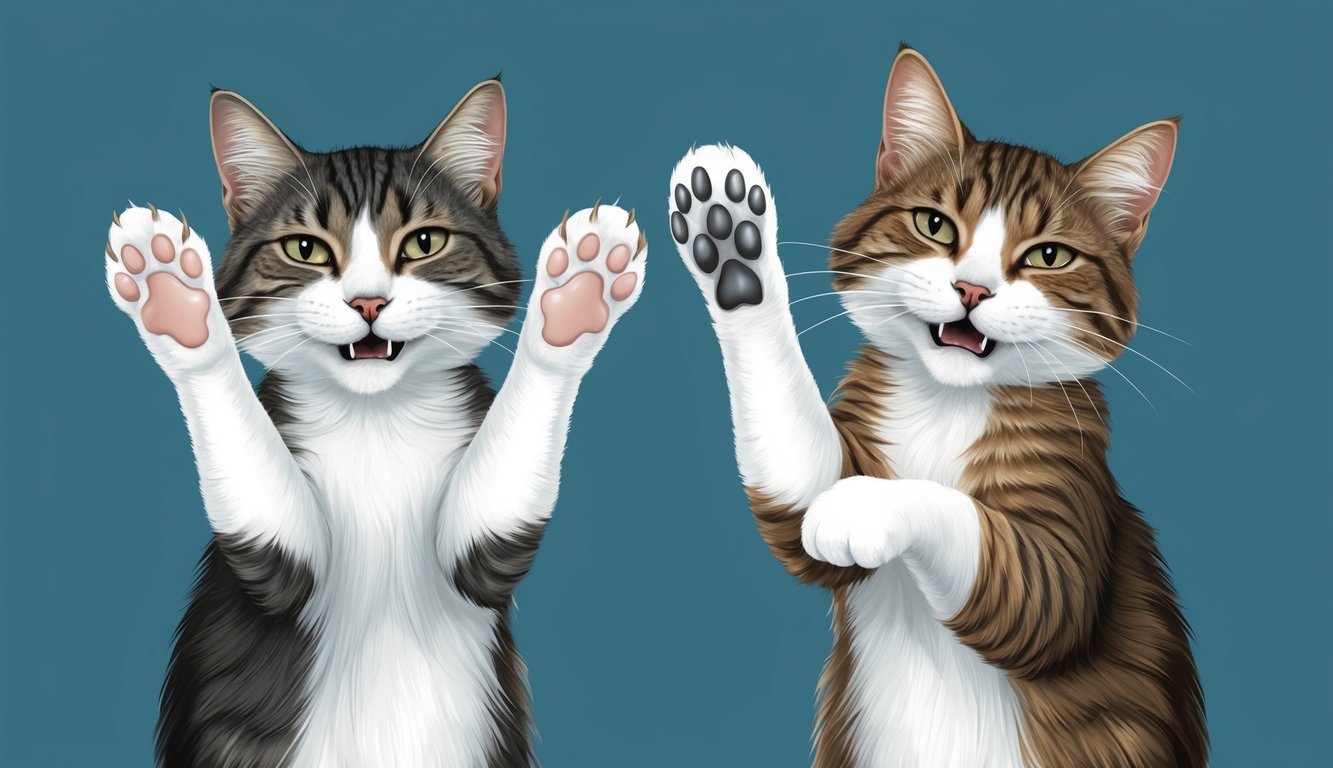
The legality of declawing cats varies significantly across the United States.
Some states have enacted laws prohibiting this procedure, while others still allow it with certain regulations.
States With Declawing Bans
Several states have taken steps to ban cat declawing altogether.
Notably, New York led the way as the first state to make declawing illegal in July 2019.
This law prohibits the procedure unless it’s necessary for treating a medical condition affecting the cat.
Other states, including California, Massachusetts, and New Jersey, have also introduced legislation aimed at restricting declawing practices.
In these areas, the focus is on protecting feline well-being by considering declawing as a form of animal cruelty.
Although many states still permit the practice, scrutiny is increasing as awareness of animal welfare grows.
Legislation Process and Considerations
The process of enacting declawing bans typically begins with public advocacy and awareness campaigns.
Organizations like PETA and the Animal Legal Defense Fund lobby for stricter regulations.
When a bill is proposed, it undergoes discussions in state legislatures, where policymakers weigh the ethical implications alongside pet owner rights.
Advocates argue that declawing is an inhumane practice, as it involves amputating a cat’s toes.
Legislative proposals often include exceptions only for medical conditions, ensuring cats receive necessary care while protecting them from unnecessary procedures.
These considerations are crucial as they influence how laws evolve to ensure the welfare of cats across different states.
Health and Behavioral Consequences
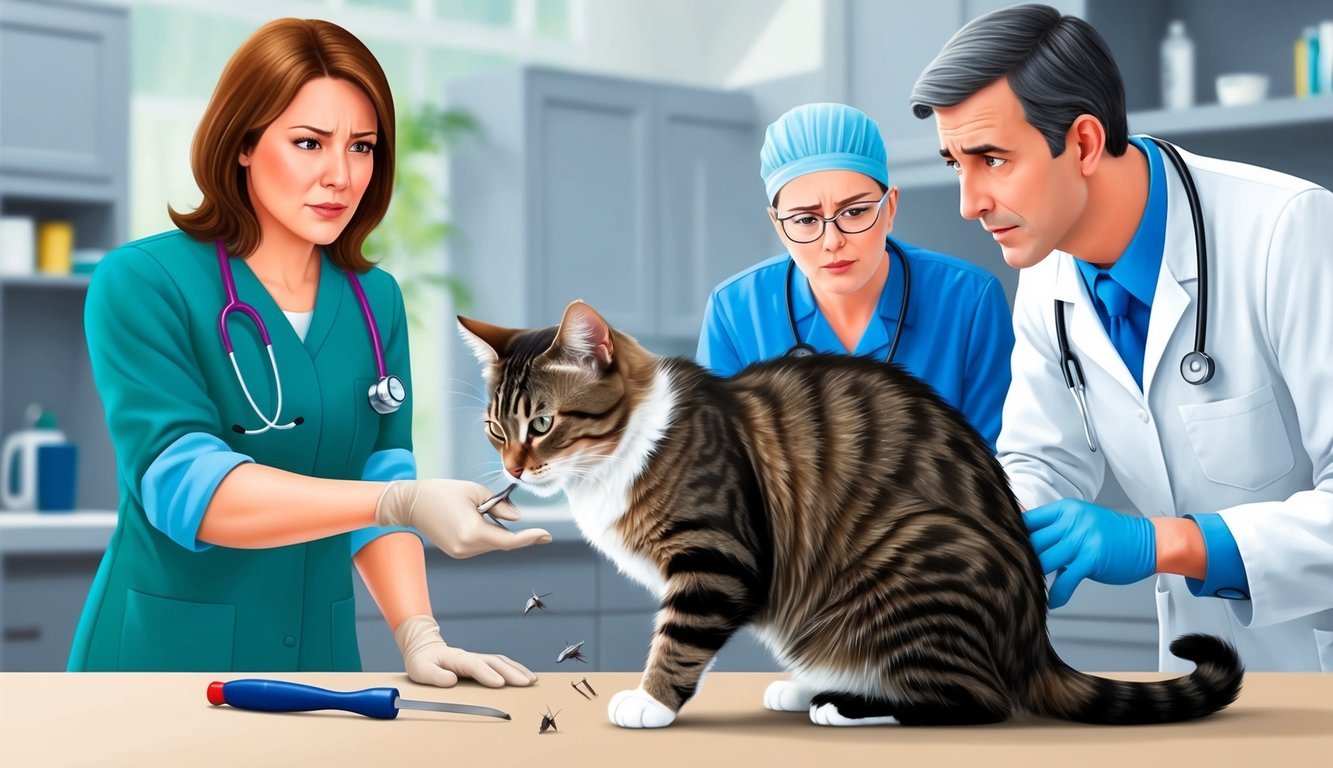
Declawing is not just a simple nail trim; it’s a surgical procedure that can have significant health and behavioral repercussions for your cat.
Understanding these consequences helps you make informed choices about your pet’s welfare.
Physical Effects Post-Declawing
After declawing, your cat may experience various physical complications.
Common issues include:
- Chronic Pain: Many cats suffer from ongoing pain that can affect their quality of life.
- Infection: The surgical site may become infected, leading to further health risks.
- Nerve Damage: Improperly performed procedures can damage nerves, causing lingering discomfort.
- Injury: Cats might injure themselves more easily after declawing, as they lose their primary defense mechanism.
Additionally, you may notice changes in your cat’s posture and movement.
The alteration in how their feet come into contact with surfaces can lead to further complications over time.
This adjustment might also lead to arthritis, making it crucial to consider these potential outcomes.
Alteration of Natural Cat Behaviors
Declawing impacts your cat’s natural instincts, particularly their scratching behavior.
Scratching is vital for cats to:
- Mark territory
- Remove dead claw sheaths
- Stretch muscles
Once declawed, many cats face difficulty adapting.
They may develop behavioral issues like increased aggression, biting, and avoiding the litter box.
Changes in behavior can also lead to stress and anxiety.
A previously confident cat might become fearful or anxious, affecting their overall well-being.
It’s essential to recognize these changes as signs that declawing can disrupt more than just your furniture; it can fundamentally alter your pet’s personality and health.
Alternatives to Declawing
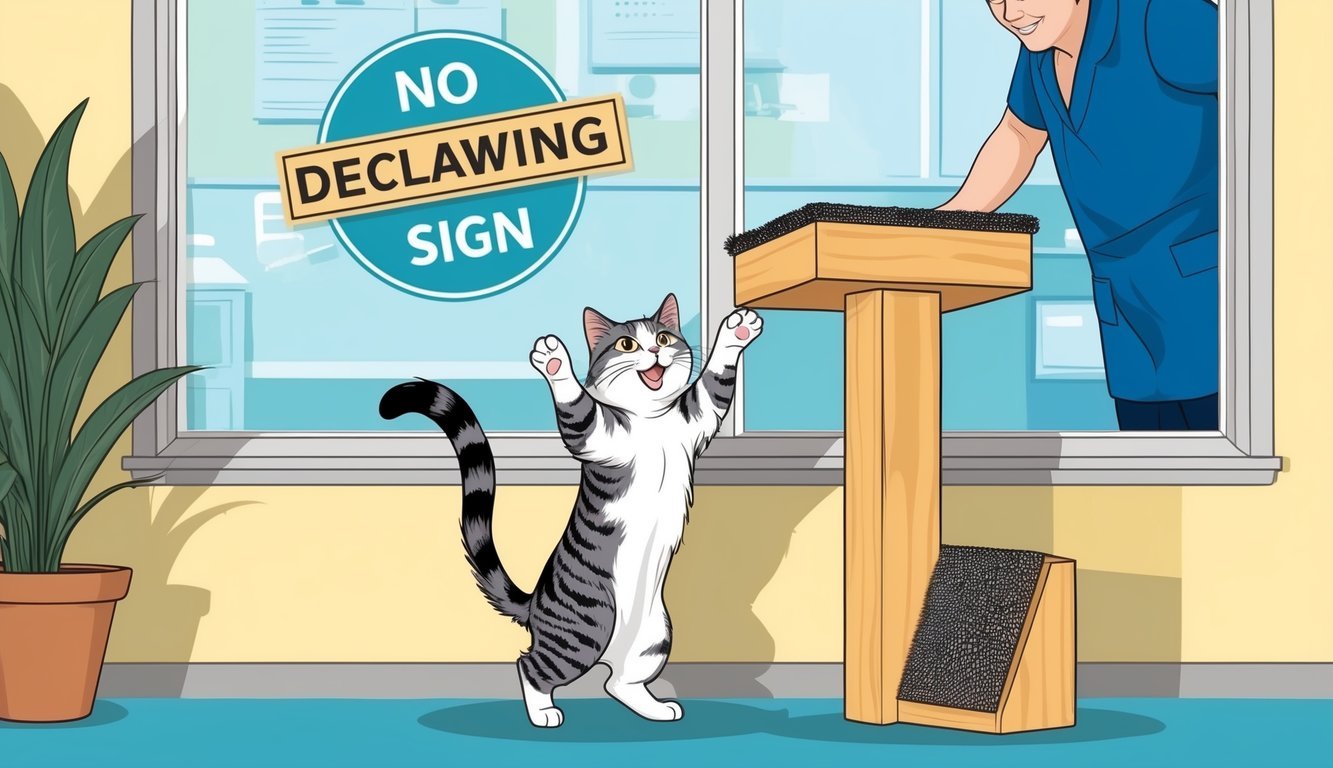
You have several alternatives to declawing that can help manage your cat’s scratching behavior while keeping their welfare in mind.
These options promote healthy habits and can enhance your relationship with your pet.
Preventive Measures and Training
Preventive measures are essential in managing your cat’s natural scratching instincts.
Start by introducing scratching posts early, ideally when your cat is still a kitten.
Choose different materials, like sisal or cardboard, to find what your cat prefers.
Positive reinforcement plays a significant role in training.
Reward your cat with treats or praise when they use the scratching post instead of furniture.
If they try to scratch inappropriate surfaces, gently redirect them to the scratching post.
Consistency and patience are key here.
Regular nail trimming is another crucial preventive measure.
Aim to trim your cat’s nails every 2-4 weeks.
This not only keeps their claws manageable but also reduces potential damage to your belongings.
Products and Solutions
There are several products on the market designed to prevent scratching without harming your cat.
Nail caps are a fantastic option; they are soft and fit over the tips of your cat’s claws.
You’ll need to replace them every 4 to 6 weeks, but they can effectively minimize scratching damage.
Sticky tape or double-sided tape can deter your cat from scratching specific areas.
Cats dislike the texture, so applying it to furniture can redirect their behavior.
Pheromone sprays and plug-ins can create a calming environment.
They emit scents that help reduce anxiety and encourage your cat to scratch in appropriate areas.
Finding the right mix of these alternatives can create a happier home for both you and your cat.
Role of Veterinary Professionals

Veterinary professionals play a crucial role in addressing the needs of pet owners regarding declawing.
They not only provide essential guidance but also determine when this procedure may be necessary for a cat’s health.
Counseling Pet Owners
When it comes to the care of your cat, veterinarians are your primary resource.
They help educate you about the implications of declawing, which is often viewed as an unnecessary procedure.
Important Points:
- Declawing, known as onychectomy, involves the removal of a cat’s toe bones along with the claws.
- Most veterinarians discourage declawing due to the associated pain and behavioral changes.
Veterinary Medical Societies advocate for non-surgical alternatives, such as regular nail trims and providing scratching posts.
Your veterinarian might suggest behavioral training or other strategies to prevent damage to your furniture.
When Is Declawing Medically Necessary?
While declawing is discouraged, there are rare instances where it may be considered medically necessary.
This typically occurs in cases of severe medical conditions.
Examples of Medical Necessity:
- Infected Claws: If a cat has chronic infections that do not respond to treatment, declawing might be a last resort.
- Feline Leukemia or FIV: In cases where a cat poses a risk to others, and aggressive scratching is involved, a vet may consider declawing.
Veterinarians must carefully weigh the risks versus benefits before proceeding with such a decision.
In most cases, they will prioritize pain management and alternative treatments to ensure the well-being of your cat.
Public Perception and Education
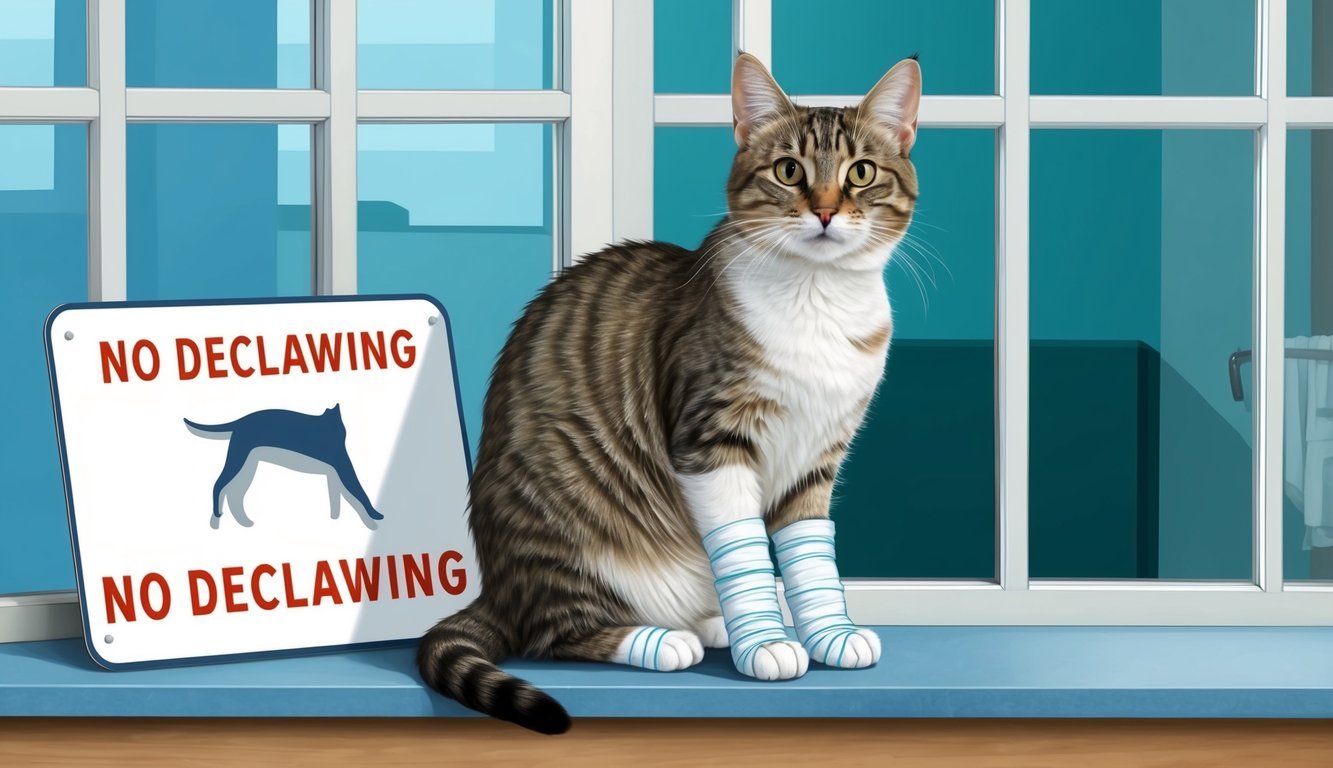
Growing awareness about the implications of declawing cats has shifted how pet owners and animal welfare groups view the practice.
Education on alternatives to declawing and an appreciation for natural behaviors are essential components of this change.
Awareness Campaigns by Animal Welfare Groups
Animal welfare organizations, such as the Humane Society, play a crucial role in shaping public perception.
They launch campaigns to inform pet owners about the consequences of declawing.
Often, these campaigns include:
- Informational Workshops: Offering sessions about cat care, focusing on alternatives to declawing.
- Community Outreach: Distributing brochures and organizing events to engage with pet owners directly.
These efforts aim to highlight that declawing is not merely a cosmetic choice, but one that can harm your cat physically and emotionally.
Increased education encourages you to consider humane alternatives, ensuring that you make informed decisions for your pets.
Understanding Cat Scratching as Natural Behavior
Scratching is a natural behavior for cats, serving multiple purposes.
It helps them:
- Sharpen Claws: Ensuring their claws remain healthy and functional.
- Mark Territory: Scratching leaves scent from glands in their paws.
Recognizing these behaviors can change how you view nuisance scratching.
Providing appropriate scratching posts or alternatives can effectively redirect the behavior.
By understanding this instinct, you’re more likely to embrace solutions that respect your cat’s needs without resorting to declawing.
This helps cultivate a more compassionate pet-owner relationship while maintaining your home’s integrity.
Economic and Social Implications

Declawing cats carries several economic and social implications that can impact both pet owners and society at large.
Understanding these aspects is essential when making decisions about cat care and ownership.
Cost of Declawing vs. Alternatives
Declawing a cat can be quite expensive, typically ranging from $100 to $500, depending on the veterinarian and region.
This cost includes surgical fees, anesthesia, and follow-up care.
Many owners may not be aware of cheaper and less invasive alternatives, such as nail trimming, claw caps, or scratch-resistant furniture.
For instance, regular nail trimming can cost $10-$20 at a grooming service, and claw caps are around $20 for a pack.
These alternatives not only save money but also promote a healthier way to manage scratching behavior without the risks associated with declawing.
Impact on Cat Adoption and Abandonment
The legality of declawing can significantly influence cat adoption rates.
In states where declawing is banned, potential cat owners might be more inclined to adopt, knowing that the practice isn’t an option.
Conversely, in areas where declawing is legal, some owners might abandon their cats if they face behavioral issues related to scratching.
Elevated abandonment rates can strain animal shelters and increase the cost of care for these facilities.
Adoption rates may also suffer if prospective owners perceive declawing as a necessary procedure for a well-behaved pet.
Education about the risks associated with declawing and the availability of humane alternatives is crucial in promoting responsible pet ownership.
Frequently Asked Questions
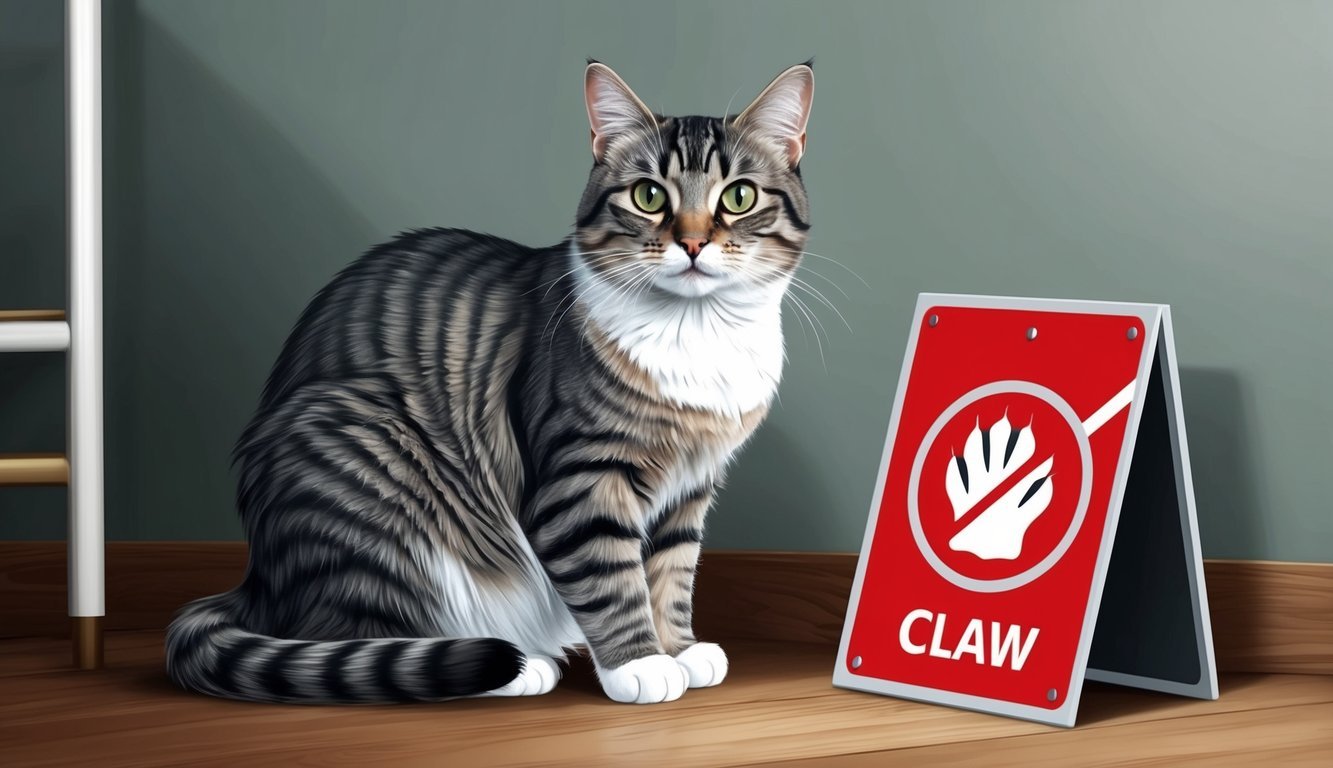
Understanding the legality and ethical implications of cat declawing can help you make informed decisions as a pet owner.
Here are some common questions regarding this practice.
What are the legal restrictions on declawing cats in the US?
In the United States, laws about declawing cats vary significantly by state.
While some states impose strict regulations and consider it animal cruelty, others allow the practice with specific restrictions in place to ensure the cat’s welfare.
Which states have banned the practice of declawing cats?
As of now, states like California, New York, New Jersey, and Massachusetts have officially banned declawing cats.
In these locations, the procedure is seen as cruel and is punishable by law, making it illegal except in specific medical circumstances.
How do European laws address the issue of cat declawing?
Most European countries have stricter animal welfare laws, leading to general bans on declawing.
The approach in Europe focuses on promoting humane treatment and considering the well-being of pets, making declawing a rare practice.
Can you legally declaw a cat in California?
No, you cannot legally declaw a cat in California.
The state has enacted legislation that prohibits the practice under any circumstances, viewing it as inhumane and unnecessary.
Are there any alternatives to declawing offered by veterinarians?
Veterinarians often recommend alternatives to declawing, such as nail trims, scratching posts, and soft nail caps.
These options allow you to manage your cat’s claws without resorting to surgical procedures.
What are the ethical considerations surrounding cat declawing?
Ethically, declawing raises concerns about animal welfare and pain management.
Many advocate against the procedure due to the potential for chronic pain and behavioral issues it can cause, encouraging more humane options for cat care.


